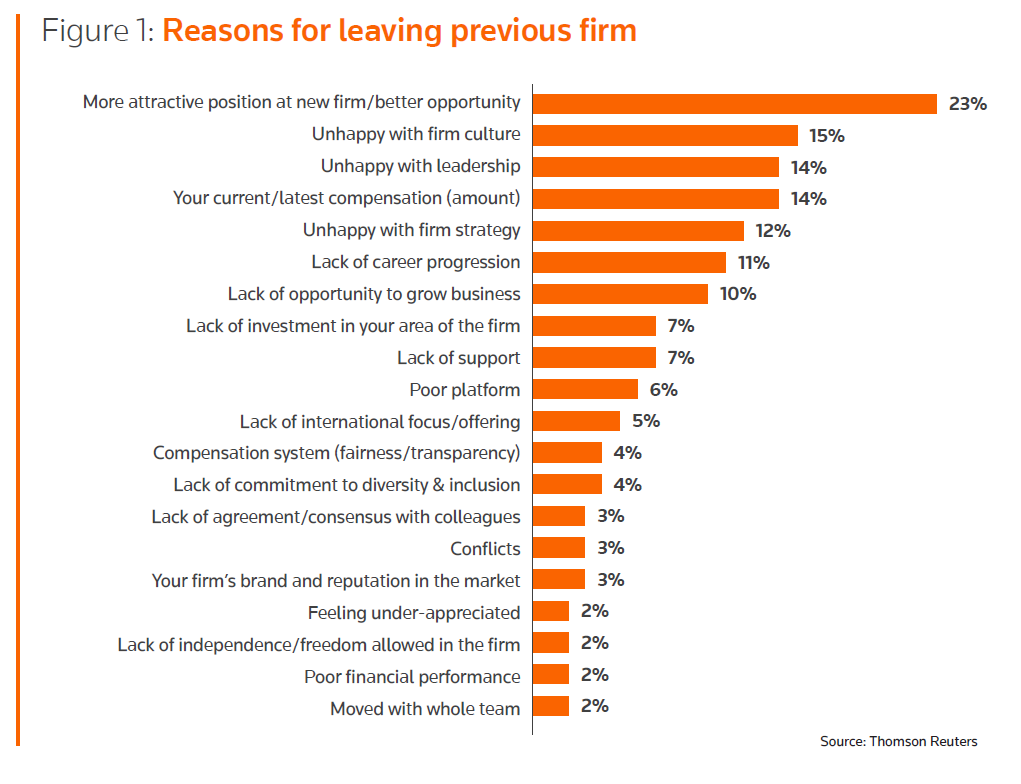In the third installment in our series of "Stellar Performance Research" reports, we look at how law firms can best ensure the successful integration and ensuing careers of any lateral hires
It’s no surprise that many law firms invest significant time and money into recruiting partners from other law firms or from within corporate law departments — and with good reason. These so-called lateral hires may be rainmakers, bringing with them a solid book of business, or they may be hired to strategically increase the firm’s diversity or expertise levels in an effort to improve the client experience and boost the firm’s share of client spend.
Whatever the reason, new hires often fill in gaps in a firm’s expertise or enable it to target a specific sector, industry, or client. Often, by bringing on an entire team of lawyers from elsewhere, a firm can expand into new markets or geographies or transform a fledgling practice into a potential powerhouse.
In a new series of Stellar Performance Research reports, we will look at the experiences that Thomson Reuters Stand-out Lawyers — those nominated by their clients as being exemplary attorneys — have had with such critical topics as lateral hiring, client feedback, recruitment and retention, lawyer engagement, collaboration, and more. In our first two reports we looked at formal client feedback programs and retaining top associates; and now, we examine the experience of lateral hires — why such individuals commonly leave one firm to join another, the factors that contribute to their success once they’ve arrived, and what law firms can do to improve the experience of the laterals they bring in.
The keys to successful lateral hiring
One of the key factors that weighs heavily in the success or failure of any lateral hire is, not surprisingly, their experience with the firm’s integration process. Our previous Stellar Performance research has shown that lateral partners bring roughly 22% of their books of business to their new firms, on average; but that number can reach much higher or shrink to nothing, depending on how well-organized and effective the hiring law firm’s on-boarding and integration process is for new laterals.
Of course, each lawyer will have their own deeply personal reasons for making such a switch, yet our research does uncover a number of common reasons offered by those who do leave.
This report continues our analysis of the experience of Thomson Reuters Stand-out Lawyers in this area; in fact, of this year’s cohort of 2,400 stand-out lawyers who responded to our survey, roughly 7%, or 156, have been with their firms from between one and three years — and of those, 109 moved from a partner role at one firm into a partner role at another.
But why do law firm partners make this switch? Clearly, law firms on both sides of the lateral hiring experience need to understand why partners make lateral moves, if for no other reason than to optimize the experience of new hires and keep their own quality partners from leaving the firm.

Of course, each lawyer will have their own deeply personal reasons for making such a switch, yet our research does uncover a number of common reasons offered by those who do leave. Indeed, one of the most common reasons for leaving a firm is simply that the lawyer received a better offer elsewhere, indicating interestingly, that many lateral hires were not looking for a new position when they were approached by the firms to which they eventually moved.
But what makes these lawyers open to change in the first place? Our research shows that dissatisfaction with firm leadership and strategy top the list, although compensation issues and a lack of opportunities to grow and progress within their careers were also cited.
Of the processes that law firms can most easily control, however, the firm’s integration process for laterals is a critical factor. The lateral’s view of how they are welcomed and integrated into the firm’s work process and office culture goes a long way in determining if the lateral will be successful and ultimately will stay with their new firm. And again, not surprisingly, the more satisfied a lawyer is with the integration process, the more likely they are to stay with their new firm.
The report also outlines how firms can improve their integration and on-boarding processes to ensure that lateral hires — in fact, all hires — have a positive experience, paving the way for a long-term career trajectory within the firm that benefits both sides.
Indeed, ensuring that a firm’s integration process for laterals if successful is a critical factor in determining if a lateral will stay with their new law firm.
You can access the full report, “Stellar Performance 2023: Ensuring the success of lateral hires” by filling out the form below:







